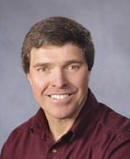 As you begin to prepare your lawn and garden for the spring season, pleases consider some of the following suggestions for working safely and successfully with your tools. Unfortunately, using hand tools and machines improperly can cause injuries which can keep you from enjoying these purposeful outdoor activities.
As you begin to prepare your lawn and garden for the spring season, pleases consider some of the following suggestions for working safely and successfully with your tools. Unfortunately, using hand tools and machines improperly can cause injuries which can keep you from enjoying these purposeful outdoor activities.
Let's begin with the rake. After the stormy winter season, you probably have lots of sticks, twigs and leaves on your lawn. When raking these and dead grass into small piles, be sure to hold the rake with a firm but relaxed grip. Use lightweight gloves if you are prone to skin blisters. Try to pull the rake in a diagonal pattern past your side with relatively short strokes. That is, avoid reaching too far forwards or pulling too far backwards, as either of these exaggerated movements can overstress your lower back. To gauge your raking range, periodically check your torso position. You should not notice more than a slight bend at the waist as you reach forward, or pull backwards, and your torso should remain essentially erect throughout each raking action. Change sides every few raking strokes to avoid overstressing the same muscle groups with uninterrupted repetitive movements.
Rather than moving all the debris to one large collection area, make many small deposits throughout the yard. Doing this prevents you from pulling too much material too far, which can be stressful to your arms, shoulders and back. Small piles also facilitate gathering up the leaves and sticks in manageable movements. Just be sure to bend at the knees rather than at the waist when you bag the debris to avoid overloading your low back area.
Once your lawn is raked, you may find some crabgrass or dandelions that need to be removed. Using a hand trowel, you can typically dig-out these and other weeds without much difficulty. However, don't be tempted to bend over to reach the roots, as repeated waist bending can adversely affect your lower back. Instead, take time to kneel on one knee which provides torso support and stability, and minimizes back-rounding as you pop out the offensive plants.
The next step in your lawn work is likely to involve pushing a lime spreader or a lawnmower. Unless you have a hilly piece of property, your body should remain relatively straight as you propel the spreader or mower. Try not to lean forward or backwards unless you are mowing on an inclined or declined surface. Pay special attention to turning the equipment. Make close, pivot-type turns without flinging your arms too far from your body. Also, avoid overstriding as this can be problematic to your hip and back areas. The key to enjoying each lawn-mowing session is unhurried movements, moderate strides and smooth turns.
If your mower has a grass-collecting unit, be careful as you detach it, carry it and dump the contents. Remember to bend at the knees rather than at the waist, and to carry the collection unit close to your body. Do your best to dump the grass clippings near the ground, and don't even think about holding the collection apparatus over a fence. The leverage factors associated with over-fence dumping can place excessive forces on your arms, shoulders and back, and this procedure should not be part of your game plan.
If you have hedges or bushes to trim, do so in short times segments with sufficient rest between successive cuttings. Whether you use manual or electric trimmers, holding the implement in front of your body is more tensive than you may think. To reduce stress on your arms, shoulders and back, make every effort to keep your upper arms close to your body. That is, try to trim at waist level rather than at shoulder level. This may require moving a step stool or a ladder, but it is a much better alternative than back pain or shoulder injury.